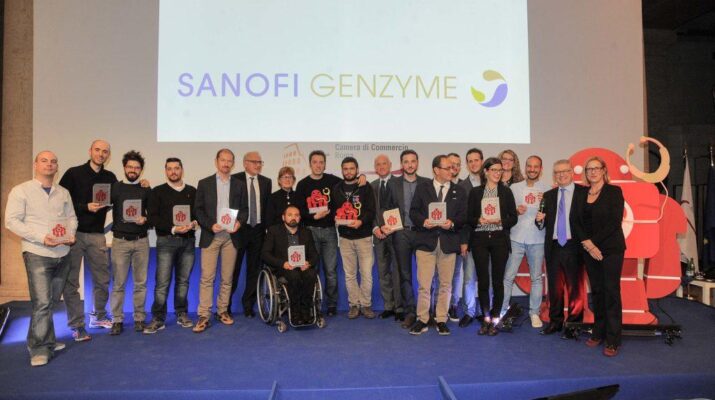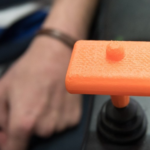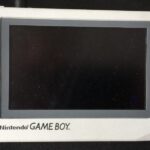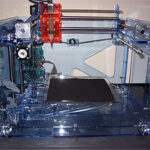
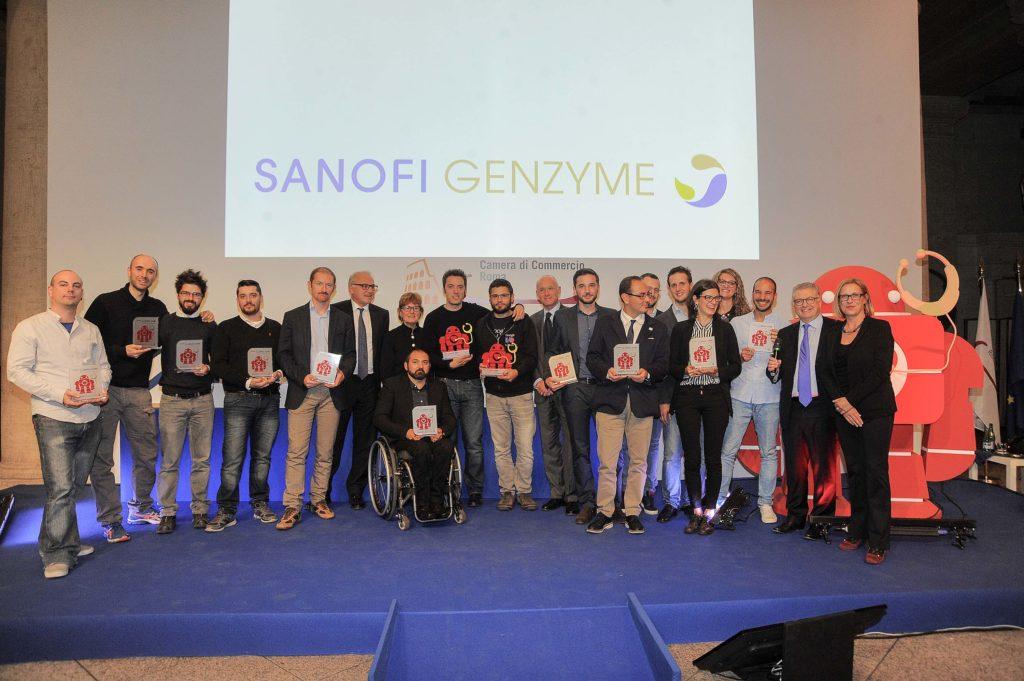
We cover many design challenges at 3DPrint.com, but my favorites are those that challenge participants to invent devices that improve the day-to-day lives of people with disabilities. Sometimes, those competitions are inspired by the story of one individual whose painful or debilitating condition was eased by 3D printing and/or robotics, ultimately leading to help for many, many others.
A six-year-old girl named Roberta was the catalyst for the Make to Care contest, after the brace her father created for her drew the attention of biotech company Sanofi Genzyme at Maker Faire Rome last year. Inspired by his hard work and creativity, the company launched the Make to Care initiative, challenging makers to design and build assistive devices for people like Roberta, who suffers from a rare condition called spinal muscular atrophy. The competition received many brilliant ideas from entrants, and last week, the two winners were chosen and announced at this year’s Maker Faire in Rome.
Click4all was created by Luca Enei and Nicola Gencarelli of Fondiazone ASPHI Onlus, a nonprofit dedicated to improving opportunities for people with disabilities through information and communication technology. Their invention is a kit that allows individuals to build their own tailored “computer access” devices, such as mice, to suit their particular needs. In addition, users can build interactive educational or rehabilitative games that encourage cognitive and motor skills development. It’s an incredible invention, as you can see in the video below:

The other winner was dbGLOVE, created by Nicholas Caporusso and Gianluca Lattanzi of INTACT Healthcare. The device helps people who are both deaf and blind to both live autonomously and communicate with others by touching sensitive areas on a wearable electronic glove, which translates each touch into a different function: operating appliances, opening computer applications, or transmitting messages through a speech function, a computer screen, or over the Internet. Users can also receive messages from others; the glove translates message data into different vibrations that each represent specific letters over the hand. The device is open source, and the creators plan to release the API shortly so that the community can further build on what they have designed.
The two winning teams will be flown to Silicon Valley for a week to meet with other innovators and learn more about how to advance their ideas. The other finalists include:
-
TooWheels, an open source DIY sport wheelchair created by Fabrizio Alessio
- PD-Watch, a wearable device designed by Luigi Battista to monitor the symptoms and progression of Parkinson’s Disease
- IntendiMe, created by Alessandra Farris, Giorgia Ambu, Antonio Pinese, Riccardo Arciulo, and Leonardo Buffetti, is a system that alerts hearing-impaired people to household sounds, such as doorbells and alarms, via their smartphones
- Glassense, smart glasses that enhance sounds and speech understanding capabilities for hearing-impaired people, created by Luca Giuliani, Luca Brayda, and Francesco Diotalevi of Istituto Italiano di Tecnologia
- SoundSight Training, designed by Irene Lanza, Marco Manca, and Henrik Kjeldsen, is a 3D virtual reality learning platform that trains blind people to orient themselves using echolocation
- MOLBED, designed by Davide Marin of Lumi Industries, is an electronic Braille system that can be easily and inexpensively created with 3D printed and other easily accessible parts
- UNICO, The Other Design, a series of digitally fabricated, personalized assistive objects from Opendot FabLab
- IO Kitchen, an accessible, modular kitchen created by designer Valerio Monticelli
- Disability Mouse, created by Fortunato Domenico Nocera, is a 3D printed, Arduino-controlled mouse that can be operated by mouth movements and breath
- Talking Hands, a wearable smart glove that translates sign language to audible speech, designed by Francesco Pezzuoli, Dario Corona, Simonetta Boria, and Simone Sileoni of Limix, won the Maker Faire Rome prize for the idea with the highest social implications
- Hubotics, created by Luca Randazzo and Chiara Randazzo, is a 3D printed exoskeleton that helps with upper limb rehabilitation
Finalists and winners were selected by an Evaluation Committee led by Professor Giuseppe Novelli, Dean of Tor Vergata University, after each team made a three-minute pitch. According to Sanofi Genzyme, the quality of all entries was incredibly high, and they look forward to holding the challenge again next year with even more entrants participating. Discuss this in the Make to Care forum at 3DPB.com.
[Source/Images: Provided to 3DPrint.com from Genzyme]
When it comes to 3D real estate visualization in the USA, our service provides the perfect solution for bringing property listings to life. Through our platform, you can easily access cutting-edge 3D renderings that showcase your real estate projects in a way that attracts potential buyers and investors. Whether it's residential, commercial, or mixed-use properties, our team of experts uses advanced technology to create immersive visualizations that highlight the best features of your property, making it easier for clients to imagine the space as their own.
Through our website, you can quickly get high-quality 3D real estate visualizations that are tailored to your specific needs. With our help, you'll stand out in the competitive real estate market by offering potential buyers a realistic, interactive view of your property. Our efficient process ensures a fast turnaround time, while our attention to detail guarantees that every aspect of the property is represented accurately, giving you a powerful marketing tool to promote your real estate listings.


